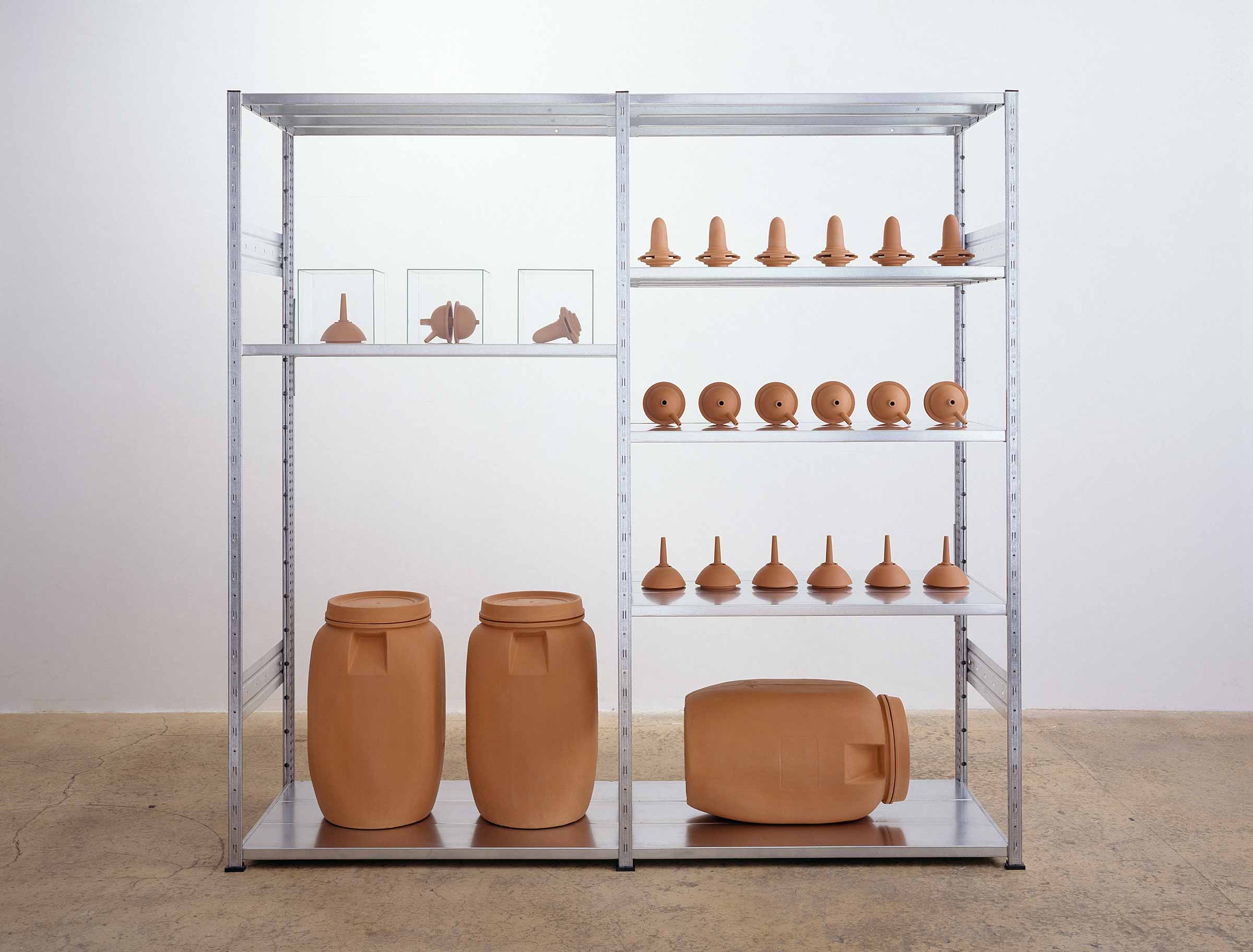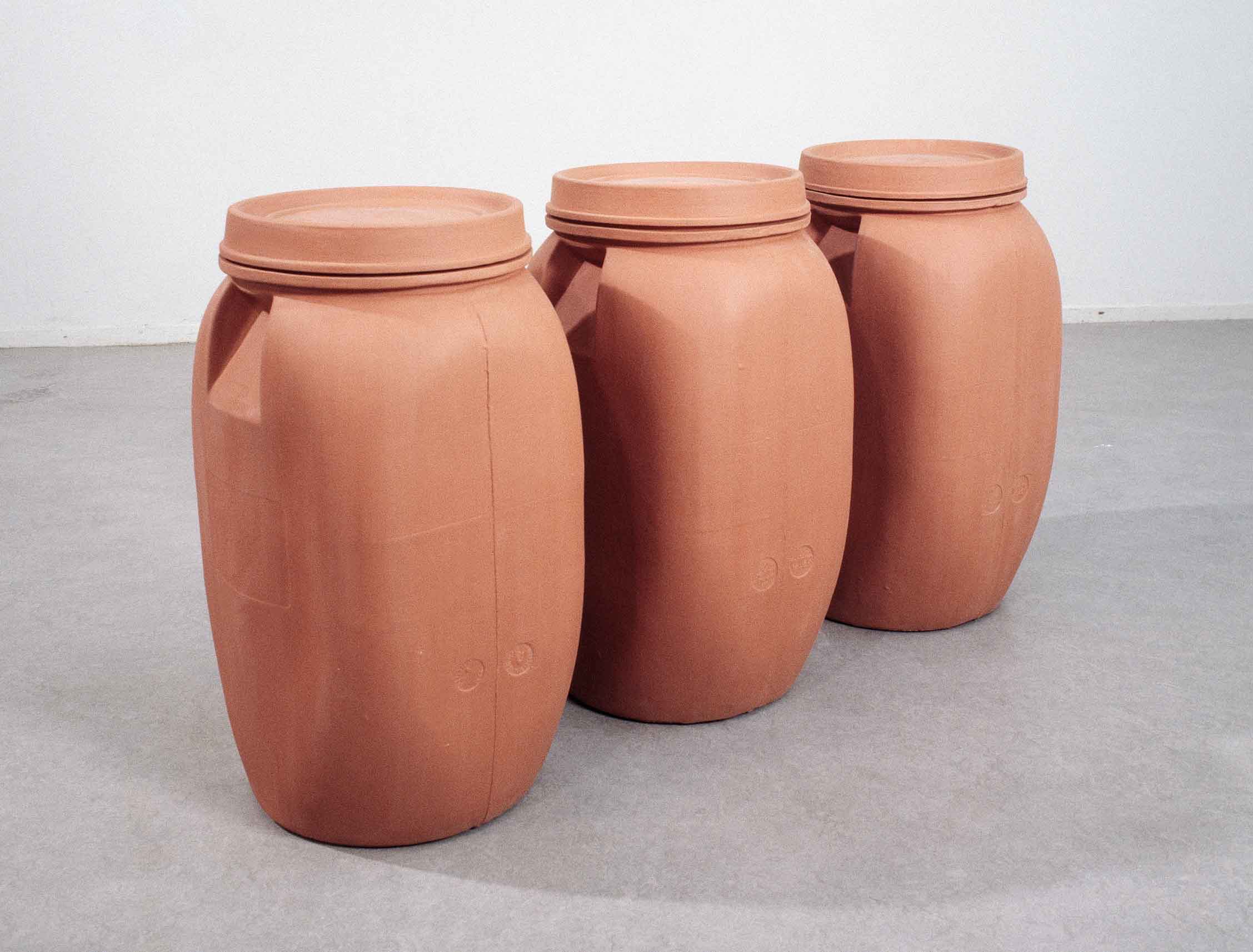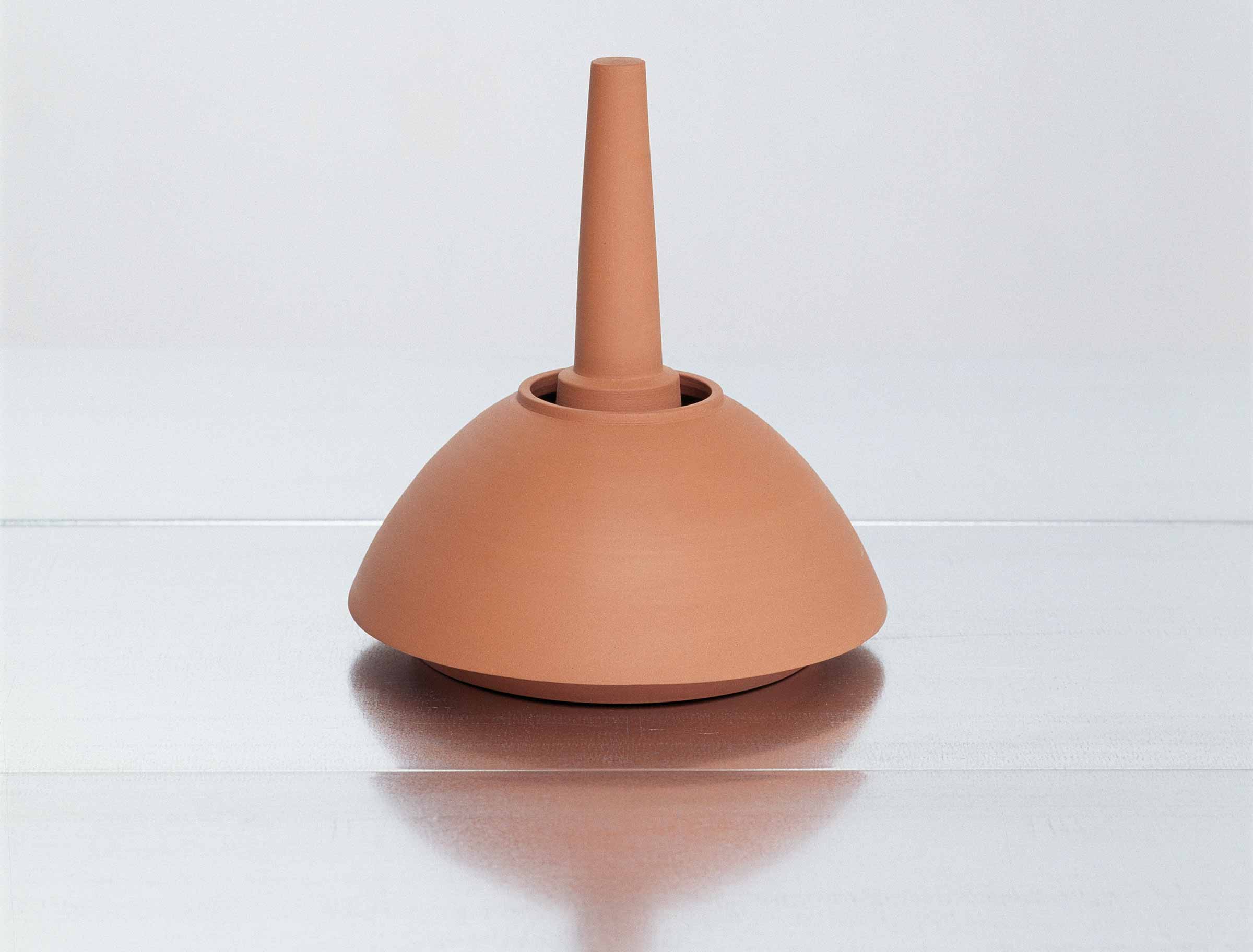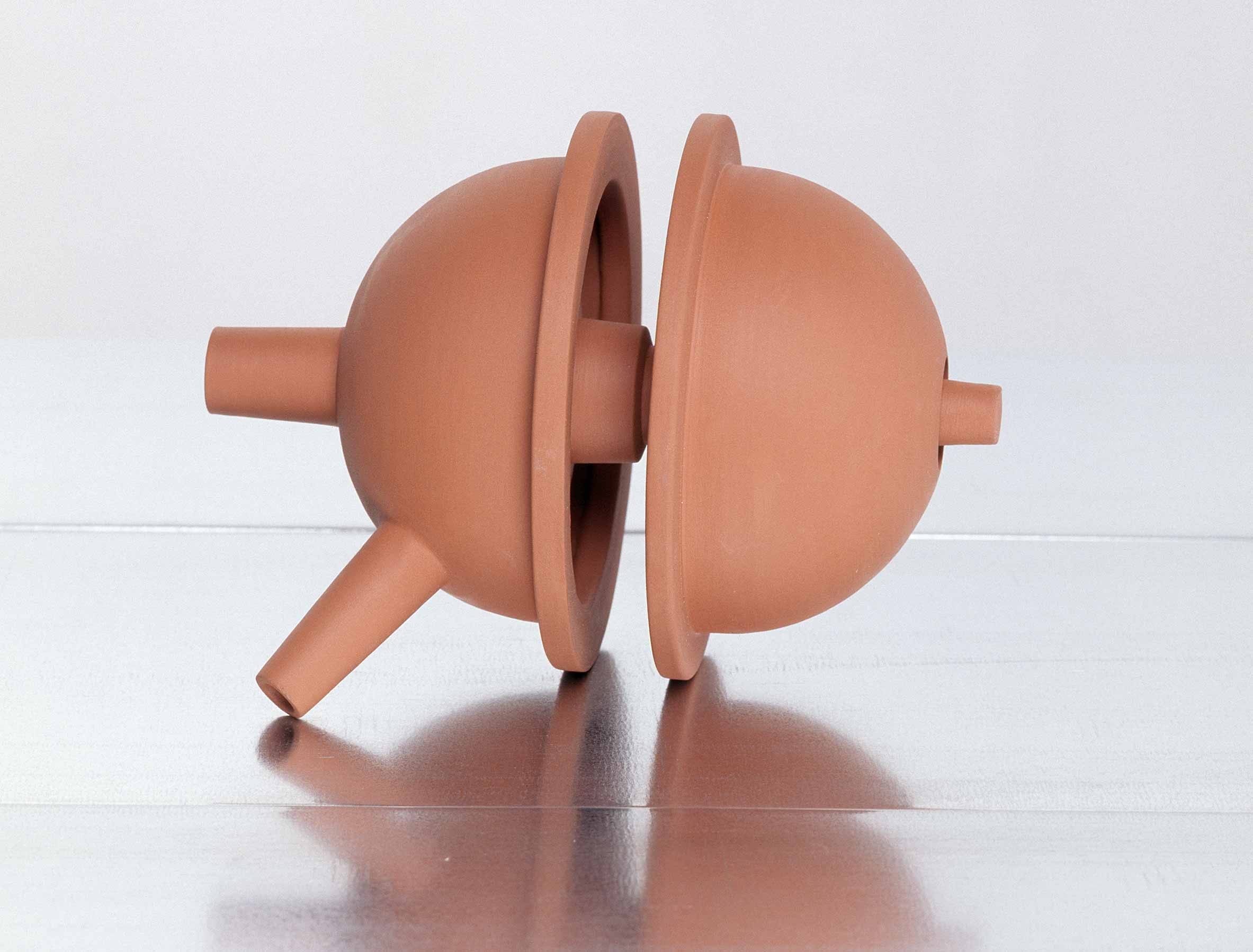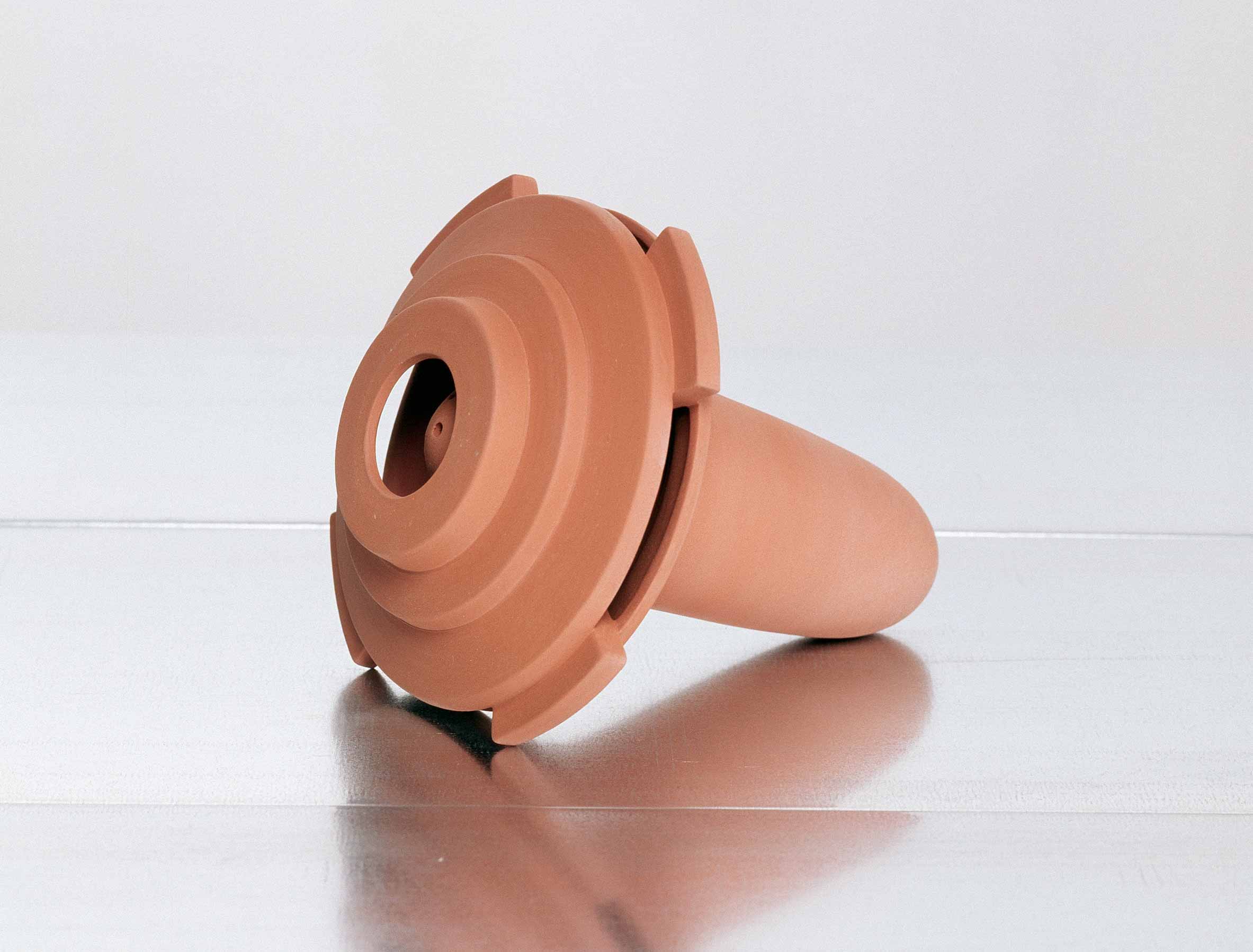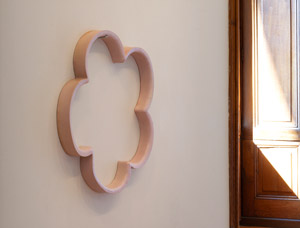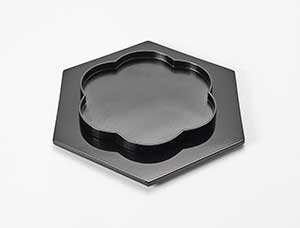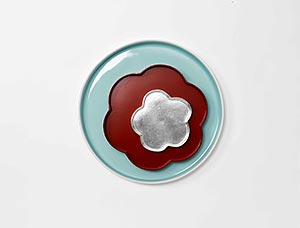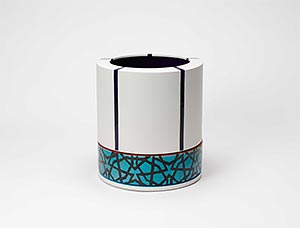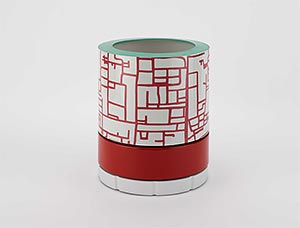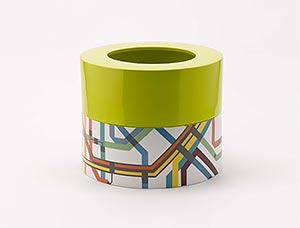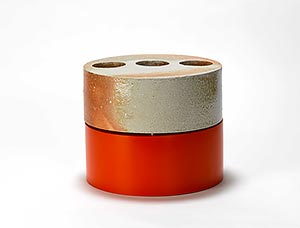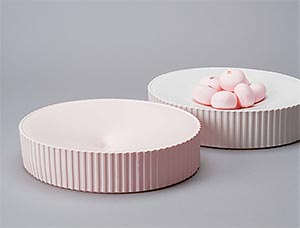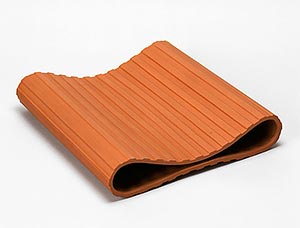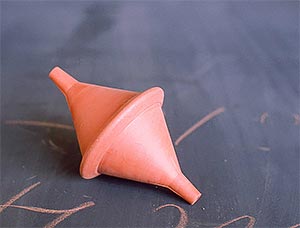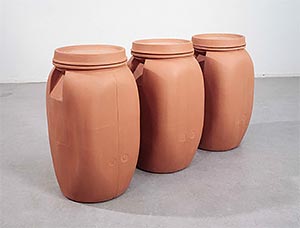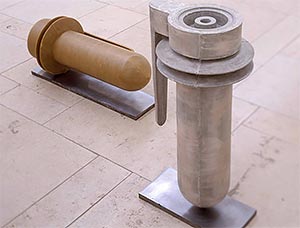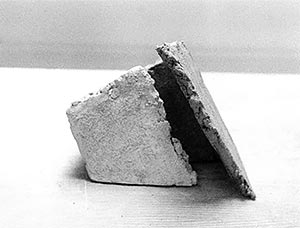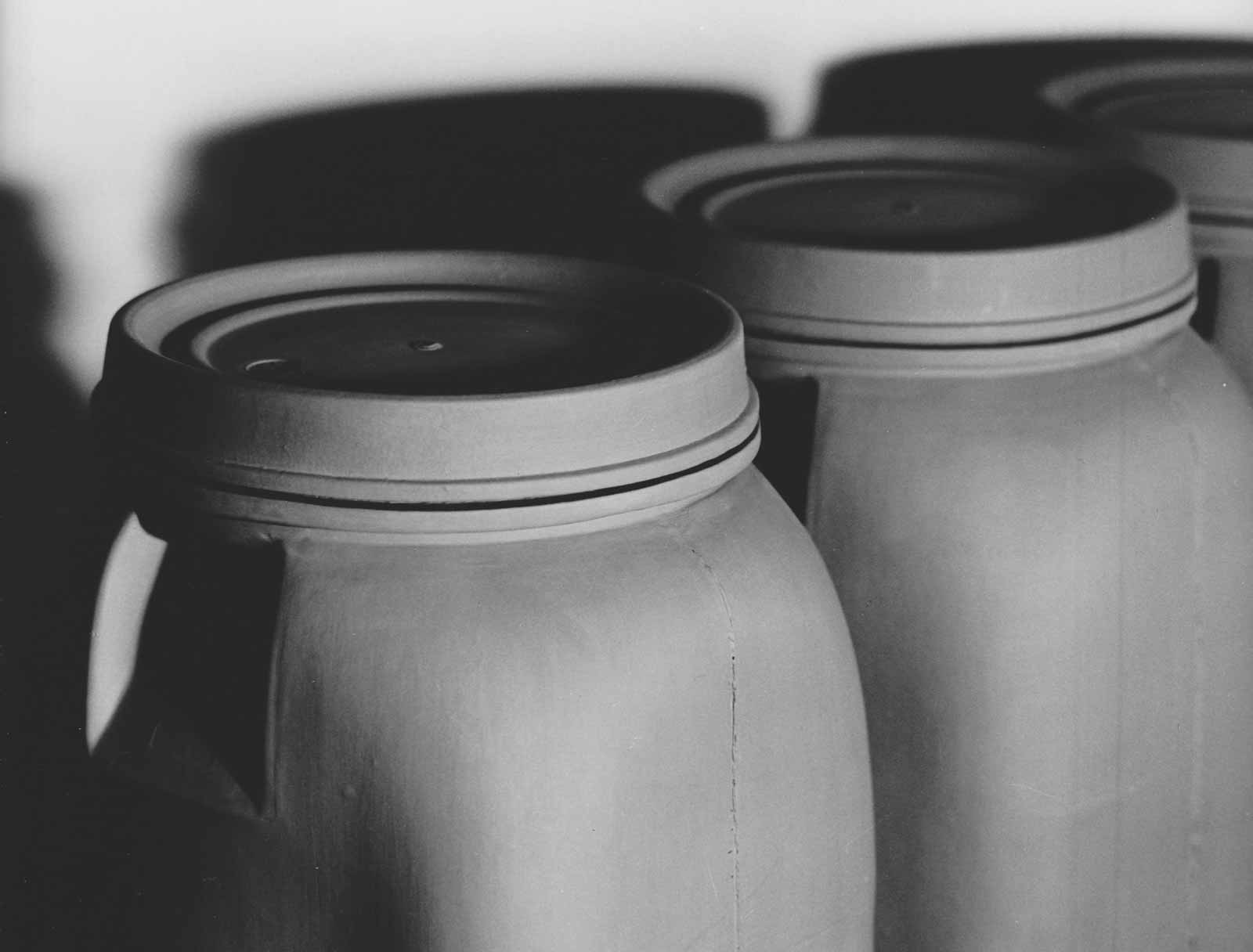
Archaeology of the Future | 1993
An archaeological excavation offers us the chance to study historical civilisations by means of the artistic artefacts that are unearthed. During this painstaking process of reconstruction we strive to interpret these objects in terms of both form and function. Once we have fathomed the latter, we can start to analyse and understand the culture in question. This leads to an interesting game of speculating on what people will say about our culture on the basis of their reconstructions from our left-over objects.
«Archaeology of the Future» addresses the following aspects: a standard plastic container is cast in a small series of three examples in terracotta. The containers are hermetically sealed, without any indication of their contents. Through their material they are reminiscent of amphorae and with that create a link to the past. But what were the plastic containers used for? For storing raw materials, for rubbish, or for disposing of toxic waste? The three clay containers are bemusing, they make us think more of an archaeological find in the future than about its history – like a mystery whose boundaries between past, present and future have become permeable.
The multiples come across as technical appliances whose functionality is apparent, but which have no actual function. As a series they negate their uniqueness, but already exhibiting a multiple under a glass bell triggers a game of context, effect and meaning. The industrially manufactured shelf unit used here as an exhibition frame has a regularity which the multiples must rub up against. – A spiralling whirl of ideas has been unleashed.
Margareta Daepp
The Parts and the Whole
Margareta Daepp’s «Archaeology of the Future» consists of 24 industrially cast terracotta objects, arranged on an industrial shelf unit. At first sight, the underlying pattern of the work is not easily detectable. The three prototypes, presented under a glass cover, are composed of two invented and two standard plastic forms, which interpenetrate one another. Three series of these objects were produced in a multiple of seven, as were three additional pieces of a «given» form («Container»).
To track down the poetry of the work, we have only to replace the terms «prototype» and «multiple» with «word» and «verse». But giving an ultimate, realistic interpretation of the work is a difficult task, as difficult as it would be of a verse. A geometrical figure consists of planes: the whole gains a new quality, which is highly elusive to analysis.
Let’s stand back. Margareta Daepp suggests that we travel through time to the future and look back on her work from there (hence «Archaeology of the Future»). Once removed from context of «turn of the millennium art» interesting questions on the meaning and purpose of the work arise. An unrestricted, open-minded look is enough: The shelf unit appears like an open page in a book, where the shelves could be lines, the objects words, the whole thing verses. Margareta Daepp’s work is plastic poetry. Our contribution to it would be to give it a name – a name of our own.
Walo von Fellenberg
